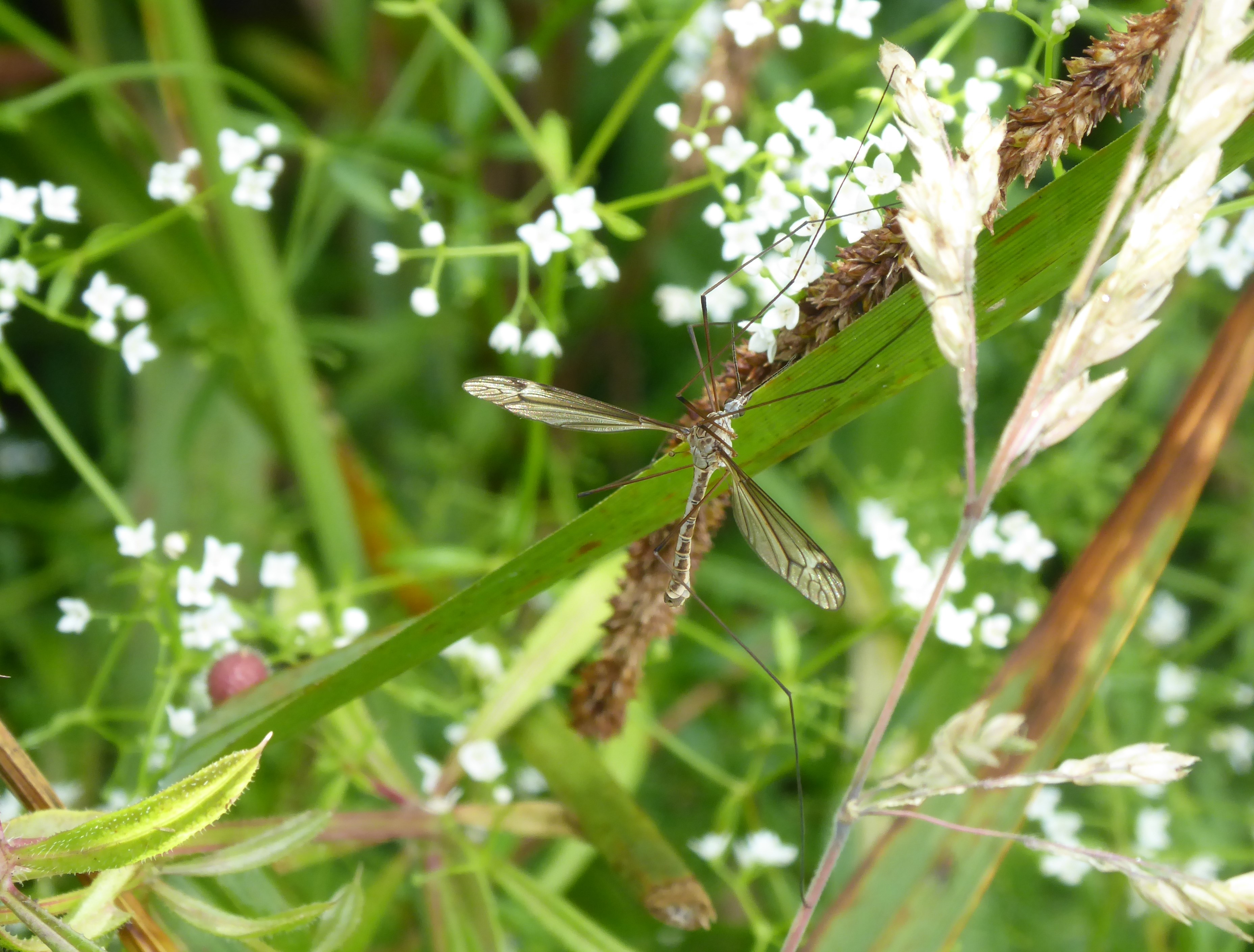This is a Crane Fly because the sepia-tinted wings have clearly defined black veins and the body is segmented translucent-brown and flared at the tip. Other species of fly similar to crane flies have different body shapes, markings, and wings. There are also sub-species. This could be a Marsh Crane-fly.
I thought it was a bit early for crane flies, as I associate them with early Autumn. They are found near water, as they deposit their eggs in damp ground. The larvae, which we know as ‘leatherjackets’ hatch out two weeks later and spend their lives feeding on the roots and stem bases of grasses and decaying plant matter right round till the following May-June. Then they pupate in the soil, emerging from July to October to deposit their eggs within 24 hours, and only live for around two weeks.
Q: If they love the dampness of damp areas, why do they come indoors?
A: Simply because, like other types of fly, they are attracted to light and warmth and once inside they find it difficult to work out how to get outside again.
